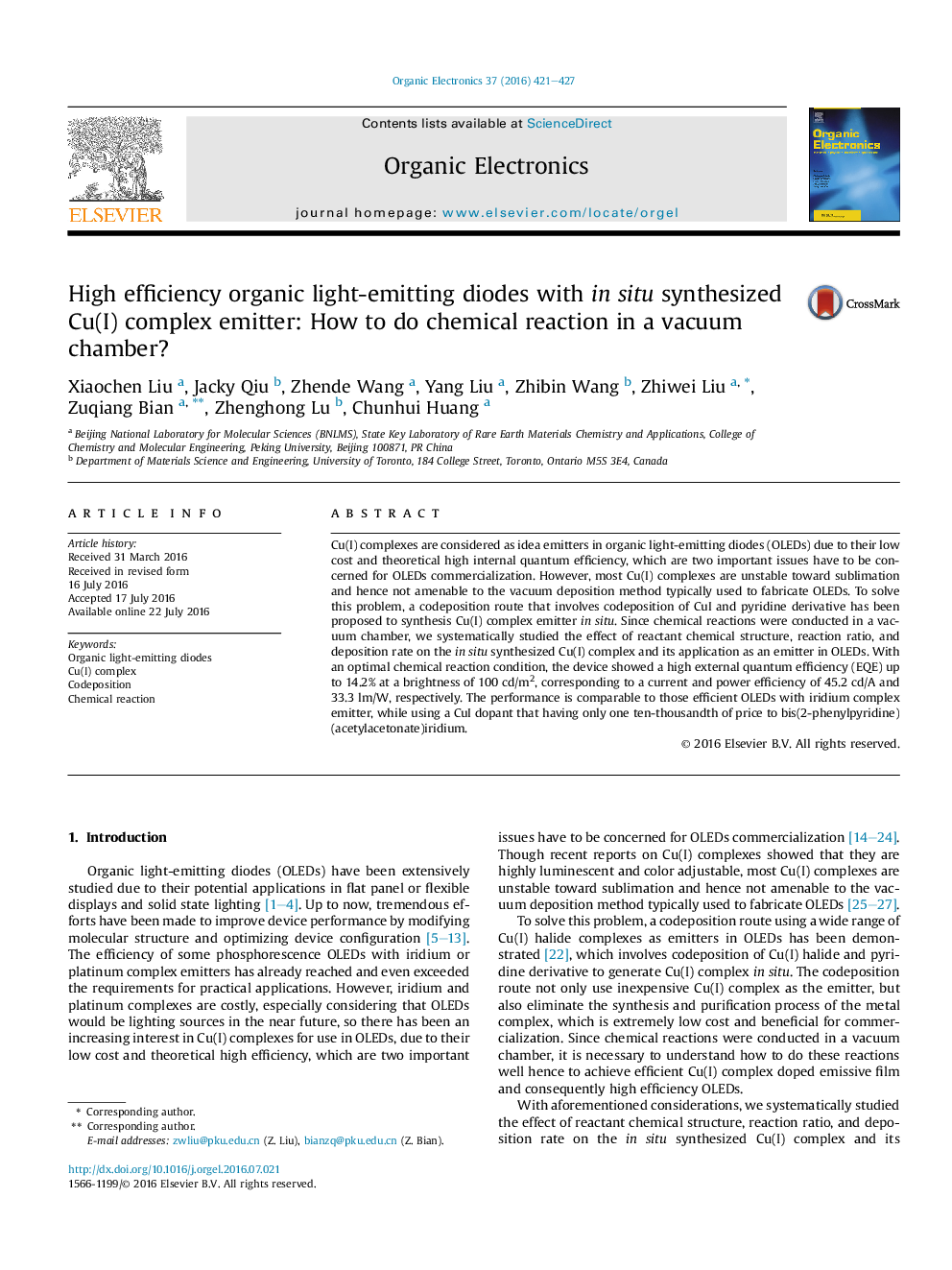| Article ID | Journal | Published Year | Pages | File Type |
|---|---|---|---|---|
| 1264703 | Organic Electronics | 2016 | 7 Pages |
•High efficiency Cu(I) complex based OLEDs were achieved by a codeposition method.•Different reactant structures, reaction ratios, and deposition rates were compared to investigate in situ reaction.•Optimal chemical reaction condition and device architecture play critical roles in high efficiency OLEDs.
Cu(I) complexes are considered as idea emitters in organic light-emitting diodes (OLEDs) due to their low cost and theoretical high internal quantum efficiency, which are two important issues have to be concerned for OLEDs commercialization. However, most Cu(I) complexes are unstable toward sublimation and hence not amenable to the vacuum deposition method typically used to fabricate OLEDs. To solve this problem, a codeposition route that involves codeposition of CuI and pyridine derivative has been proposed to synthesis Cu(I) complex emitter in situ. Since chemical reactions were conducted in a vacuum chamber, we systematically studied the effect of reactant chemical structure, reaction ratio, and deposition rate on the in situ synthesized Cu(I) complex and its application as an emitter in OLEDs. With an optimal chemical reaction condition, the device showed a high external quantum efficiency (EQE) up to 14.2% at a brightness of 100 cd/m2, corresponding to a current and power efficiency of 45.2 cd/A and 33.3 lm/W, respectively. The performance is comparable to those efficient OLEDs with iridium complex emitter, while using a CuI dopant that having only one ten-thousandth of price to bis(2-phenylpyridine) (acetylacetonate)iridium.
Graphical abstractFigure optionsDownload full-size imageDownload as PowerPoint slide
